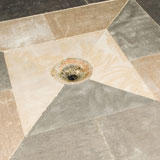NRCA's recently released publication The NRCA Roofing Manual: Membrane Roof Systems—2007 includes three introductions for its construction details: General Information Applicable to All Construction Details introduction; Built-up Membrane (BUR) and Polymer-modified Bitumen (MB) Construction Details introduction; and EPDM (EPDM) and Other Single-ply Membrane (SP) Construction Details introduction. These introductions provide additional information specific to design and application of the construction details and should not be overlooked.
The specifics
The General Information Applicable to All Construction Details introduction states the details are generic concepts and designers likely will need to modify NRCA details to meet specific project requirements. It also states the details primarily are for new construction but can apply to reroofing projects, as well.
The Built-up Membrane (BUR) and Polymer-modified Bitumen (MB) Construction Details introduction and EPDM (EPDM) and Other Single-ply Membrane (SP) Construction Details introduction provide specific additional commentary about the components used in construction details and figures to help describe nondetail-specific issues, such as clearance between pipes, walls and curbs. When necessary, each introduction is tailored to suit specific membrane types.
Both introductions include discussions about insulation, specifically stating a detail's depiction of insulation is generic and represents a base layer and top layer; the base layer may be a single- or double-layer or tapered system.
They also include comprehensive discussion about preservative-treated wood. Specifically, there is text describing new preservative types, as well as NRCA's recommendations for using the current generation of treated wood. The introductions state that in many instances, the use of nontreated, construction-grade wood is suitable for use as blocking or nailers with roof assemblies, provided reasonable measures are taken to ensure the nontreated wood remains dry.
New information about metal-edge wind-uplift resistance is included in both introductions. Because of the increased need for determining uplift resistances of metal-edge configurations, NRCA has obtained two approval listings for specific shop-fabricated metal-edge flashings based on the metal-edge shapes in the construction details. Four generic metal-edge configurations are shown: two copings, one fascia and one gravel stop. NRCA's listings are based on ANSI/SPRI ES-1, "American National Standard for Edge Systems used with Low Slope Roof Systems" and FM 4435, "Test Standard for Roof Perimeter Flashing."
Parapet walls and deck/wall intersections often require specific additional components to accommodate vertical flashings or coping caps. Because of this, NRCA provides additional information in both introductions about through-wall flashing material, weepholes, membrane liners under coping caps and shims for the top of parapet walls. For example, shims for the top of parapet walls may be composed of wood, insulation, metal or other compatible material that provides slope.
New information is provided for drains and drain sumps in both introductions. Parameters for drain sump design, such as minimum size and slope, are provided. A figure provides the recommended height of the drain bowl rim above the roof deck. This is based on the insulation thickness at the outer edge of the drain sump.
The Built-up Membrane (BUR) and Polymer-modified Bitumen (MB) Construction Details introduction provides specific information regarding torch-applied, polymer-modified flashings. For example, this section provides descriptions of what comprises flashing backers and membrane flashing sheets, as well as the appropriate material, such as perlite, for noncombustible cant strips. The introduction provides specific recommendations for backers based on combustibility of the substrate and application procedures for the membrane flashing sheet, such as the torch-and-flop method.
The EPDM (EPDM) and Other Single-ply Membrane (SP) Construction Details introduction provides options for base securement at roof-to-wall and roof-to-curb intersections. Six configurations are shown for EPDM roof systems, and eight configurations are shown for single-ply membrane roof systems.
Use it
The information presented here provides a brief overview of some of the information in these introductions. I encourage you to read the introductions and use the information to design and install quality roof systems.
James R. Kirby, AIA, is an NRCA senior director of technical services.

